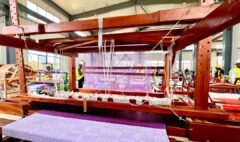Advancing Tech Transfer and Standardization

Advancing Tech Transfer and Standardization
In today’s rapidly evolving technological landscape, the role of testing machinery is crucial for fostering innovation and ensuring effective technology transfer. As industries strive to bring new products to market, the integration of advanced testing methods and standardized processes becomes essential. This post explores the significance of testing machinery in driving innovations and the importance of standardization in facilitating tech transfer.
The Role of Testing Machinery in Innovation
Testing machinery serves as a vital tool in the development and validation of new technologies. It allows researchers and developers to assess the performance, safety, and reliability of their innovations before they reach the commercial market. Key aspects include:
- Validation of Concepts: Testing machinery enables the practical evaluation of theoretical concepts, ensuring that innovations meet the required specifications and standards.
- Quality Assurance: By rigorously testing products, manufacturers can identify potential flaws and improve quality, leading to enhanced consumer trust and satisfaction.
- Accelerating Development: Advanced testing technologies streamline the development process, allowing for quicker iterations and faster time-to-market for new products.
Tech Transfer: Bridging the Gap Between Research and Market
Technology transfer (TT) is the process of transitioning innovations from research environments to commercial applications. Effective tech transfer is essential for maximizing the impact of research investments. Here’s how testing machinery plays a role:
- Facilitating Collaboration: Testing facilities often serve as collaborative spaces where researchers and industry professionals can work together, sharing insights and resources to enhance innovation.
- Demonstrating Viability: Successful testing outcomes provide evidence of a product’s viability, making it easier to attract investors and partners for commercialization.
- Regulatory Compliance: Testing machinery helps ensure that products meet regulatory standards, which is crucial for gaining market approval and ensuring consumer safety
The Importance of Standardization
Standardization is a key component in the tech transfer process, providing a framework for consistency and reliability across products and processes. Here are some benefits of standardization in relation to testing machinery:
- Consistency in Testing: Standardized testing procedures ensure that results are comparable and reliable, which is essential for validating innovations across different contexts.
- Facilitating Market Entry: Adhering to established standards can simplify the regulatory approval process, allowing products to enter the market more swiftly.
- Enhancing Collaboration: Standardization fosters collaboration between different stakeholders, including researchers, manufacturers, and regulatory bodies, by establishing common benchmarks and expectations
Conclusion
The integration of advanced testing machinery and standardized processes is vital for driving innovation and facilitating effective technology transfer. By ensuring that new products are rigorously tested and compliant with industry standards, businesses can enhance their competitiveness and contribute to a more innovative economy.
















